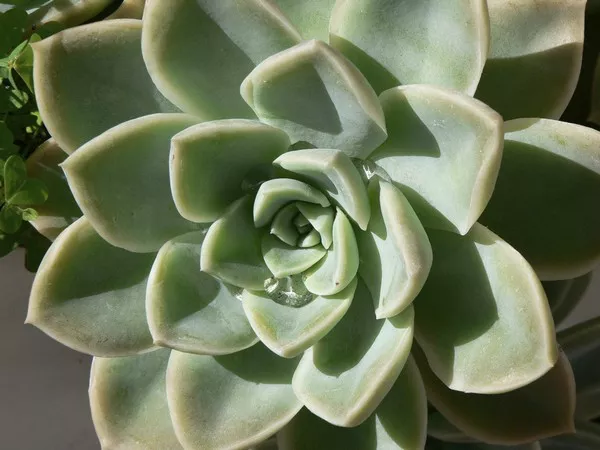Succulents, with their unique and diverse forms, have captured the hearts of plant enthusiasts around the world. Whether you’re a seasoned gardener or a beginner with a green thumb, successfully growing succulents requires a combination of knowledge, preparation, and the right tools.
Selecting the Right Succulents
The journey to growing succulents successfully begins with selecting the right plants for your environment. With a vast array of succulent species and varieties available, consider factors such as sunlight levels, temperature, and humidity. Some succulents thrive in arid conditions, while others are more adaptable to humid climates. Choose succulents that align with your local climate and the conditions you can provide.
Choosing the Ideal Soil Mix
Succulents have specific soil requirements to flourish. A well-draining soil mix is essential for preventing waterlogged roots, which can lead to root rot. Opt for a specialized succulent or cactus mix that includes components like perlite, coarse sand, or pumice. These ingredients enhance drainage and mimic the natural conditions of succulent habitats, ensuring the roots receive the right balance of moisture and aeration.
Providing Adequate Sunlight
Succulents are renowned for their love of sunlight. To ensure healthy growth, place your succulents in a location that receives ample sunlight. Most succulents thrive in bright, indirect light, while some varieties can tolerate direct sunlight. Aim for at least six hours of sunlight per day, and be mindful of the intensity, especially in regions with harsh afternoon sun. If growing succulents indoors, place them near south or west-facing windows to maximize sunlight exposure.
Understanding Watering Needs
Watering is a critical aspect of succulent care, and understanding the watering needs of your plants is key to their success. Succulents are adapted to survive in arid environments and have low water requirements. Overwatering is a common mistake that can lead to root rot. Allow the soil to dry out between watering sessions, and water the succulents thoroughly when you do. Adjust your watering frequency based on factors like temperature, humidity, and the specific needs of each succulent species.
Choosing the Right Containers
The choice of containers plays a role in the overall health and growth of succulents. Select containers with drainage holes to prevent water accumulation at the bottom. This promotes proper drainage and prevents the roots from sitting in water. Additionally, choose containers that allow for airflow around the soil, aiding in the prevention of excess moisture. Containers made from materials like terracotta or unglazed ceramics are excellent choices, as they naturally wick away excess moisture.
Applying Fertilizer Strategically
While succulents are not heavy feeders, providing them with some nutrients can enhance their growth. Use a balanced, water-soluble fertilizer diluted to half or a quarter of the recommended strength. Apply the fertilizer during the active growing season, typically in spring and summer, and reduce or eliminate fertilization during the dormant period in fall and winter. Be cautious not to over-fertilize, as this can lead to salt build-up in the soil.
Maintaining Proper Air Circulation
Good air circulation is essential for preventing fungal diseases and promoting overall plant health. Avoid crowding succulents too closely together, as this can restrict airflow. Prune or remove any dead or decaying leaves, and provide enough space between plants to allow for proper ventilation. This practice not only reduces the risk of pests and diseases but also enhances the aesthetic appeal of your succulent display.
Monitoring Temperature Conditions
Succulents are adapted to a wide range of temperatures, but understanding the specific temperature needs of your chosen varieties is crucial. Most succulents thrive in temperatures between 60°F to 75°F (15°C to 24°C) during the day and can tolerate cooler temperatures at night. However, some succulents, particularly those native to arid regions, can withstand higher temperatures. Protect your succulents from extreme temperature fluctuations and frost, as these conditions can stress the plants and compromise their health.
Implementing Pest Control Measures
While succulents are generally resilient to pests, occasional infestations can occur. Keep an eye out for common pests like aphids, mealybugs, and spider mites. Insecticidal soap or neem oil is effective for treating minor infestations. To prevent pests, regularly inspect your succulents, isolate new additions for a few weeks, and maintain a clean environment by removing debris and fallen leaves.
Providing Adequate Space for Growth
Succulents, known for their striking rosettes and intricate patterns, require sufficient space for optimal growth. Avoid overcrowding them in containers or garden beds, as this can lead to competition for resources and reduced airflow. When planting succulents, consider their mature size and give each plant ample room to spread and thrive. This not only enhances their individual beauty but also prevents issues related to overcrowding, such as disease susceptibility and stunted growth.
Understanding Dormancy Periods
Many succulents go through periods of dormancy, especially during the fall and winter months. During this time, their growth slows down, and they may require less water. Adjust your care routine to reflect the changing needs of your succulents during dormancy. Water sparingly and avoid fertilizing, allowing the plants to rest and conserve energy. Resume regular care practices when the growing season recommences in spring.
Conclusion
Growing succulents successfully involves a combination of understanding the unique needs of these resilient plants and providing them with the right environment. From selecting the appropriate soil mix to ensuring adequate sunlight, each component plays a crucial role in fostering healthy succulents. By incorporating these essential elements into your succulent care routine, you can enjoy the beauty and diversity of these fascinating plants while cultivating a thriving and vibrant succulent garden.


